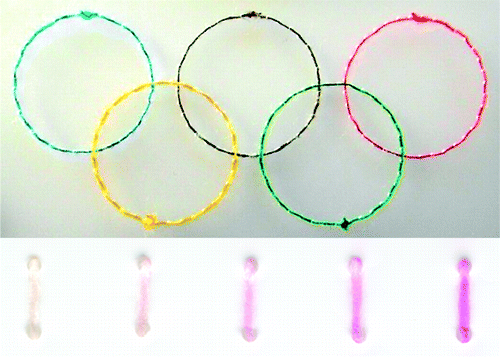Microfluidics with common thread
Along the same lines, a reader recently pointed me to this paper in the ACS journal Applied Materials & Interfaces that proposes using capillary action along ordinary cotton thread as a cheap and easy way to prototype, and perhaps even manufacture, microfluidic devices. Although the scale of even fine thread is quite a bit larger than normal for microfluidic research, the accessibility of the technique is pretty intriguing. Among other things, Wei Shen and co-workers at Australia’s Monash University demonstrate that fluids flowing along two thread “channels” can be effectively mixed simply by twisting the threads together, and that, when stitched onto an impermeable substrate, two channels can cross each other, without mixing, by the simple expedient of passing one thread over the substrate and one thread under it at the intersection.





